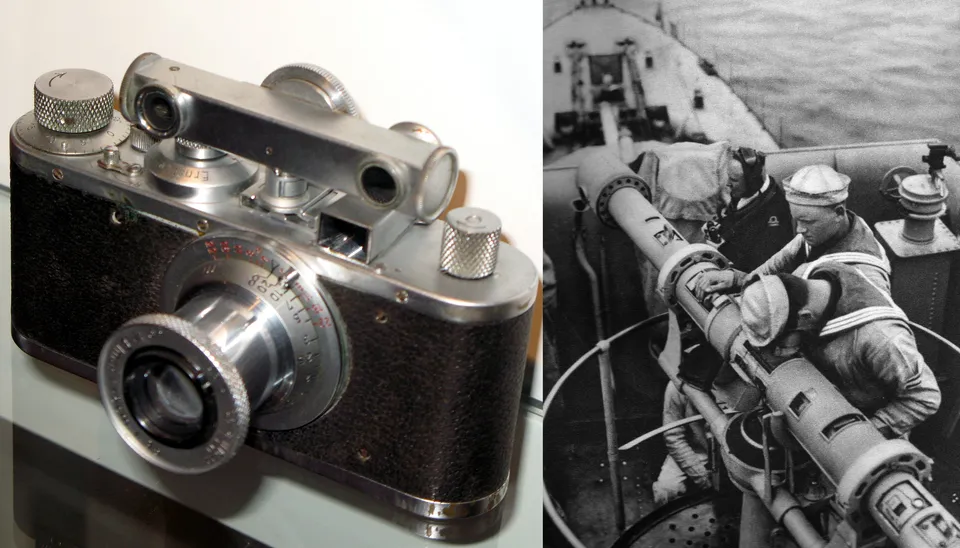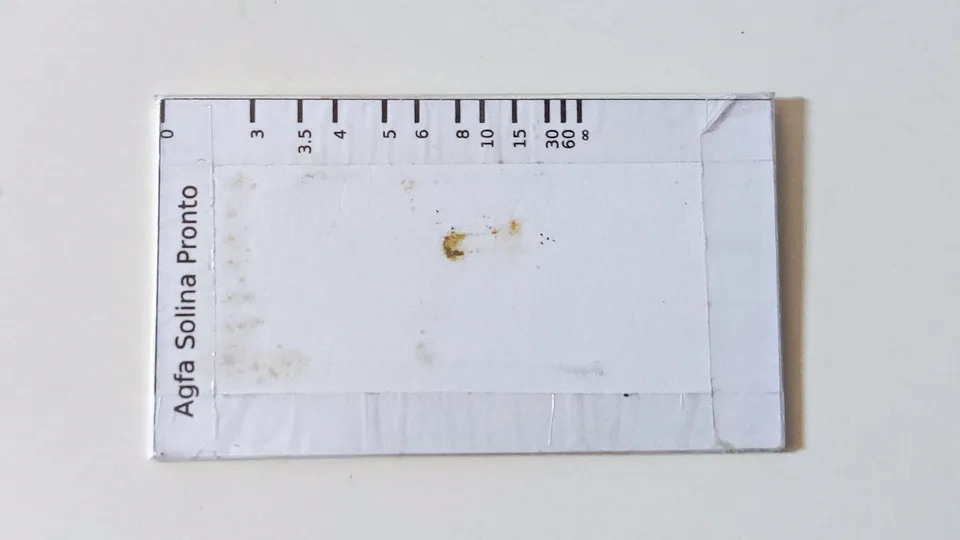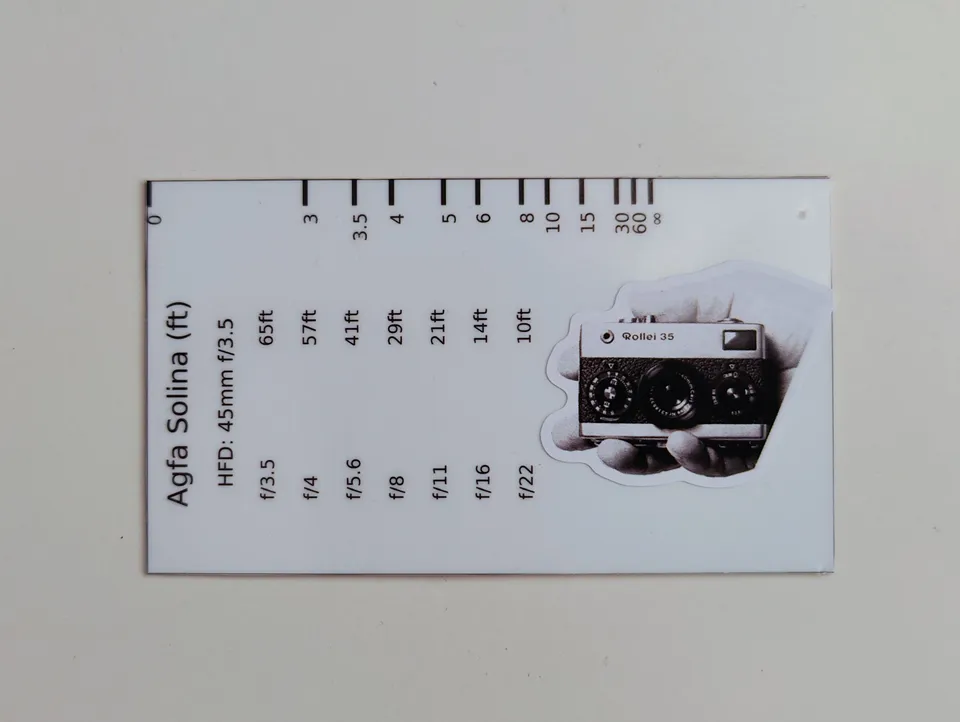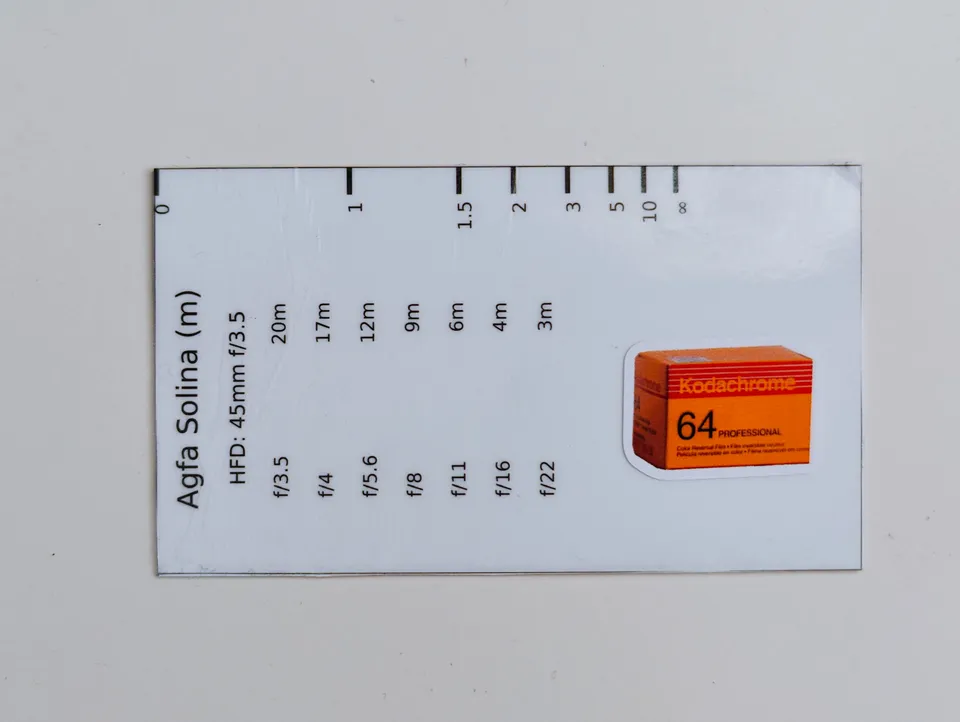Rangefinder Card
To shoot something, one needs to first know the distance. This is true for both naval battleships and photography. Both have to land the shot at the target with a small margin of error in the form of blast radius (of cannon shell) or depth of field (of Canon camera ahem). The analogy doesn't end there, as the battleships from late 1800s to mid 1990s did utilize the same apparatus (albeit at much larger scale) as view/rangefinder cameras to measure distance to a visible target, until radar emerged to replace this optical mean of rangefinding.
To users of SLRs this may not be a relevant question, they simply look into the viewfinder, rotate the focusing knob of the lens until they get a satisfactory image in view. But to users of rangefinder or viewfinder cameras, the lens is not connected to the viewfinder and thus user never quite knows where they are focusing at, and what the image looks like, until after they have developed the photo.

Viewfinder cameras do not have any focus assistance. Instead, the cameras either have a fixed focus (usually a few meters to infinity), or scale focus, where the photographer needs to somehow judge the distance to the subject, and adjust the camera's focus with the focusing ring on the lens accordingly.
The math of real battleship rangefinding is way more complex than that of a camera because the battleship has to address for the rouneded Earth surface objects many kilometers away. On camera, however, we can rely on simple trigonometry.
Thomas Achtemichuk had made a convenient site to create your own rangefinder card for short distance rangefinding. Simply hold the card up and use the misalignment between your two eyes when looking at the subject from a distance, the misalignment is pre-calculated and printed on the card so that you can refer to the markings on the card to tell the distance between you and the subject.
In practice, I have found the rangefinder card to almost always hits the bullseyes, especially on high aperture stops like f/8 and up. When I fully open my aperture to Solina's f/3.5 I miss it sometimes, either because of the small margin for error in shallow depth of field, or due to my shakey hand shooting at non-safe shutter speed of 1/25s for a 45mm lens. On a sunny day, I almost never use the rangefinder card because I can step all the way down to f/11 or f/16 and guess the distance.

I do aware that rangefinders designed as accessories to fit on the accessory shoe of a camera, but usually, those are expensive for the little value (maybe for style) they bring over the little rangefinder card. Your best bet is to get it from a job lot of cameras and accessories, where sometimes they get mixed in. It is also fine not to use one. In low-light environment, it's difficult to align the overlapping images in the rangefinder screen versus using rangefinder card anyway. Trust your eyes or the card, and step down the aperture stops.
Update (2025-02-13): I re-created the card by sticking PVC sticker protected by PET film onto a piece of 0.3mm PVC plastic


